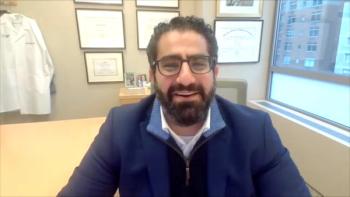
Hyperfractionated Radiation Therapy: Improved Local-Regional Control and OS in HNSCC
Patients with locally advanced squamous cell carcinoma of the head and neck treated with hyperfractionated radiation therapy (HFX) experienced improved local-regional control and, with patients censored at five years, improved overall survival with no increase in late toxicity.
This study, "Final Results of Local-Regional Control and Late Toxicity of RTOG 9003: A Randomized Trial of Altered Fractionation Radiation for Locally Advanced Head and Neck Cancer," is a multi-institutional, randomized Phase III trial of fractionation in locally advanced head and neck cancer. The study, the largest fractionation study performed to date, evaluated patients who received standard fractionation (SFX) compared to those that received HFX, accelerated fractionation with a split (AFX-S) or accelerated fractionation-continuous (AFX-C). Patients enrolled in RTOG 9003 were age 18 or older and had previously untreated, locally advanced squamous cell cancers of the oral cavity, oropharynx or supraglottic larynx in stage III or IV or stage II-IV carcinoma of the base of the tongue or hypopharynx. Patients with a prior (within five years) or synchronous malignancy other than nonmelanoma skin cancer were excluded. The trial accrued 1,076 eligible patients from September 30, 1991 to August 1, 1997.
Patients were randomized to four different treatment arms: SFX (2 Gy/fraction/day to 70 Gy in 35 fractions over seven weeks), HFX (1.2 Gy/fraction, twice daily, to 81.6 Gy over seven weeks), AFX-S (1.6 Gy/fraction, twice daily, to 67.2 Gy over six weeks, with a two-week break after 38.4 Gy) and AFX-C (total dose of 72 Gy delivered over six weeks in 1.8 Gy daily fractions and additional 1.5 Gy boost field in the afternoon during the last 12 days of treatment). All treatments were delivered five days a week, and twice-daily treatments had a minimum interfraction interval of six hours.
Local-regional failure was analyzed at two years, at five years and at last follow-up. As of October 1, 2012, the median follow-up was 14.1 years.
Read the report here:
Source: ScienceDaily
Newsletter
Stay ahead of policy, cost, and value—subscribe to AJMC for expert insights at the intersection of clinical care and health economics.















































